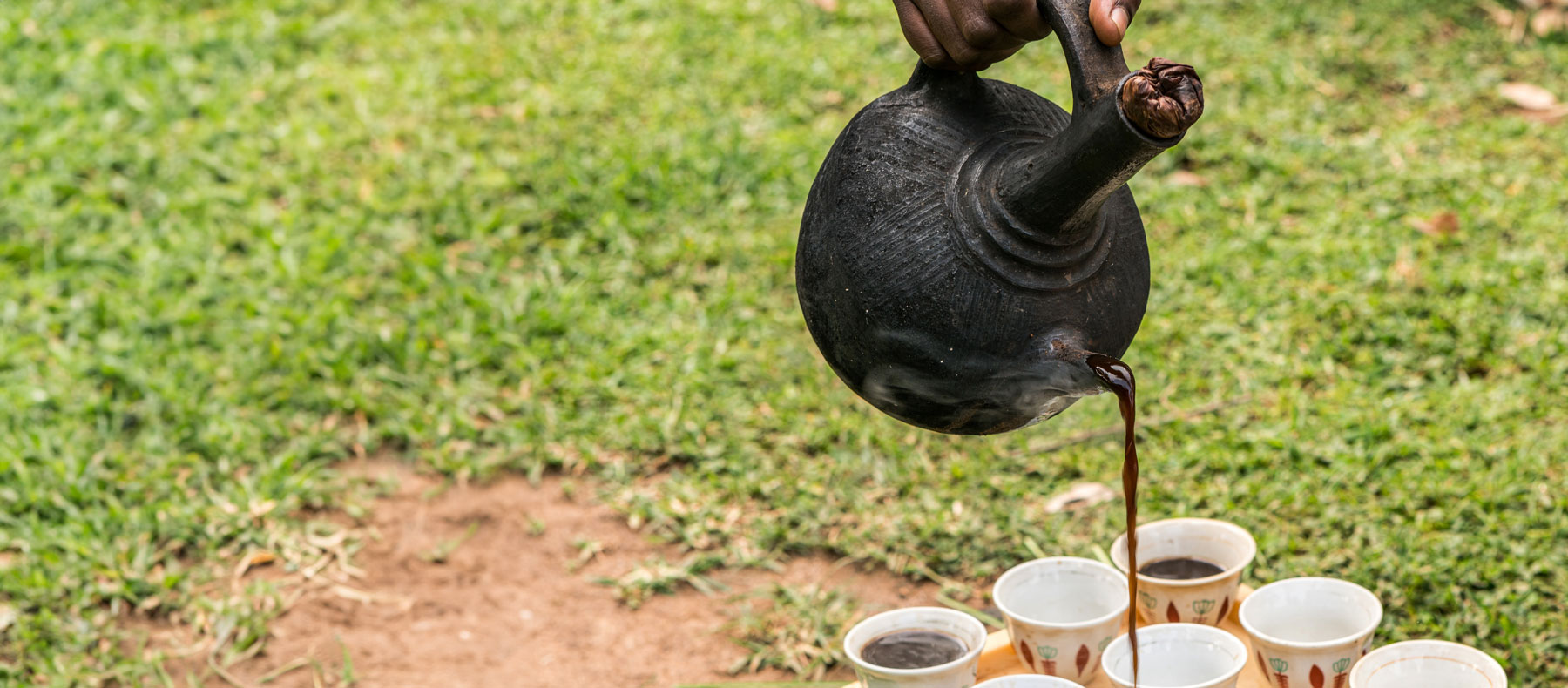
About Your Jebena
Your jebena from Jewish Voice Ministries is handmade in the tradition of Ethiopian potters and typical of those used in homes throughout Ethiopia. It includes a jebena (coffee pot), a jebena stand, four cups and saucers. The handmade nature of these items includes minor imperfections and variations that only add to the charm and authenticity of this piece of the iconic Ethiopian coffee tradition.
Jebenas come in different designs. In most areas of Ethiopia, jebenas include a separate pouring spout, however, jebenas in the northern parts of Ethiopia and neighboring Eritrea have a single spout through which grounds and water are added, and coffee is later poured.
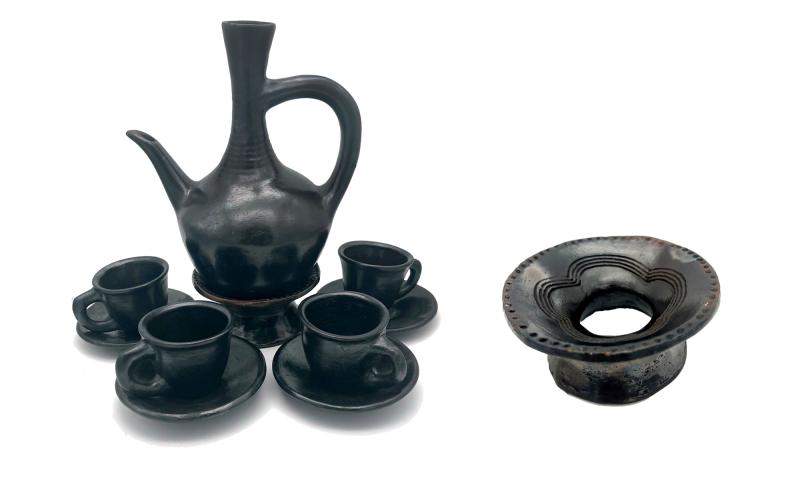
Caring for Your Jebena
Prior to using your jebena, make sure you wash it thoroughly. Opinions vary on how to clean your jebena. Some say not to use soap but to scrub it with water and a brush. In Ethiopia, it’s common practice to simply rinse out a cold jebena with cold water after each use. We do not recommend putting your jebena in the dishwasher.
The Ethiopian Coffee Ceremony
Coffee was discovered in Ethiopia, and the traditional coffee ceremony is one of the nation’s most important social customs. It honors people and friendships and long conversations. The ceremony includes every part of preparing fresh coffee for your guests, from roasting and grinding coffee beans to brewing and serving the rich, dark beverage. Traditionally, a woman of the household performs the Ethiopian coffee ceremony.
Raw green coffee beans are rinsed several times with water, removing any loosened hulls before placing the beans in a pan over hot coals or a stove burner. The beans are swirled, stirred and turned constantly to ensure even roasting. As the delicious aroma wafts from the beans, the host takes the steaming pan around for her guests to smell, building anticipation for the finished brew. Depending on the desired flavor, the beans are roasted until medium brown to dark brown with an oily appearance. Ethiopian coffee is typically dark-roasted and very strong-flavored, resembling espresso.
Roasted beans are then ground to your desired fineness. In Ethiopia, coffee makers grind beans by hand using a wooden mortar and pestle. However, you can use your electric coffee grinder; just let the beans cool beforehand to not damage the grinder.
Coffee grounds and water are placed in the jebena and set on the heat source to brew. (See “Making Coffee in Your Jebena” below.) When the coffee is ready, the host carefully pours coffee into each cup without setting down the jebena. This helps prevent stirring up the settled grounds. The small cups typically sit on a tray that rests on long blades of grass. Snacks of popcorn, roasted barley, or boiled chickpeas accompany the freshly brewed coffee amid the fragrance of burning incense.
Lingering to enjoy three cups of the ceremony is customary, as it honors the relationships of those you share it with. After the first and strongest serving, called the abol, water is added to the jebena’s coffee grounds for a second brew. The second cup, called the tona, is then a milder brew. The process is repeated for the third serving, the berekha, the mildest cup of coffee.
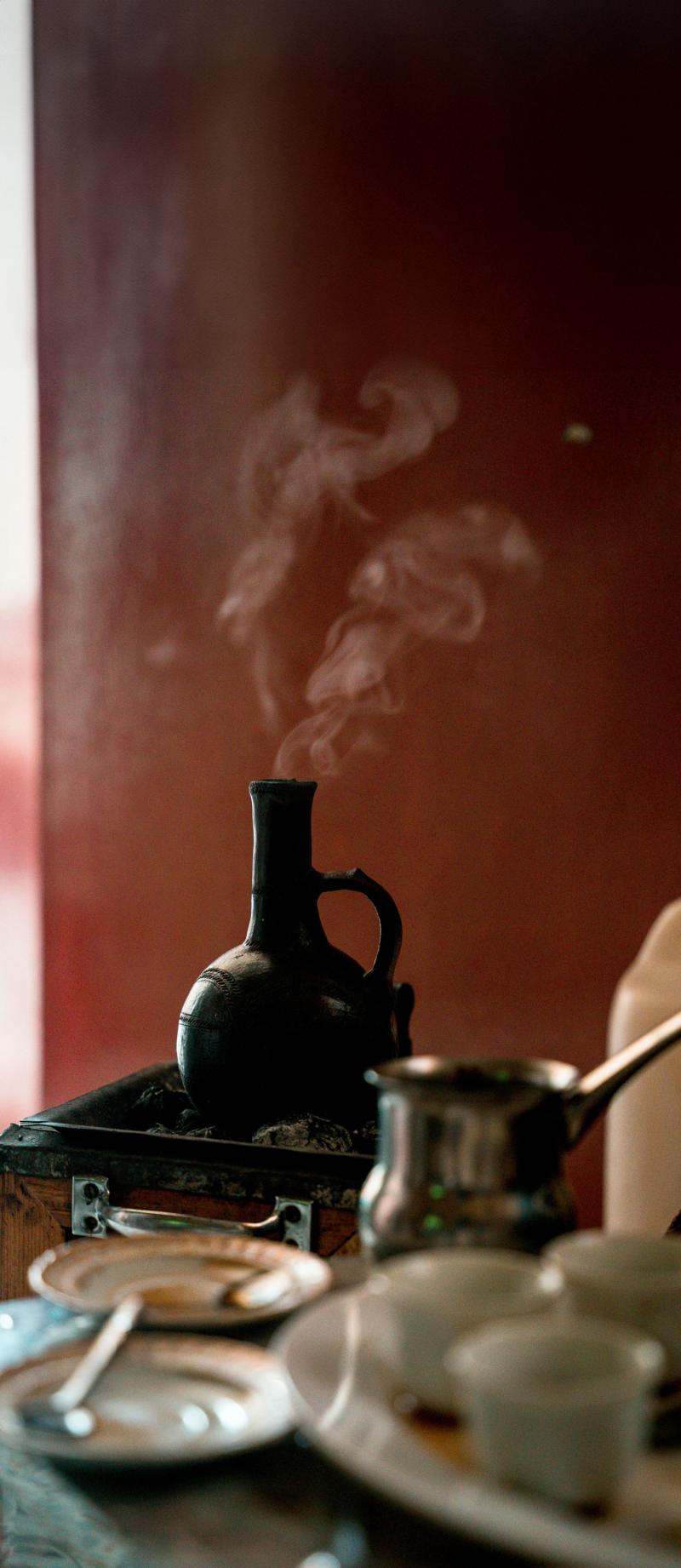
Lingering to enjoy three cups of the ceremony is customary, as it honors the relationships of those you share it with.
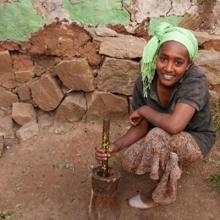
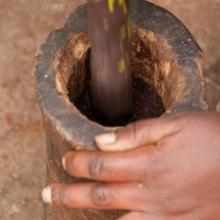
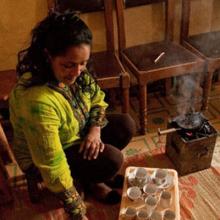
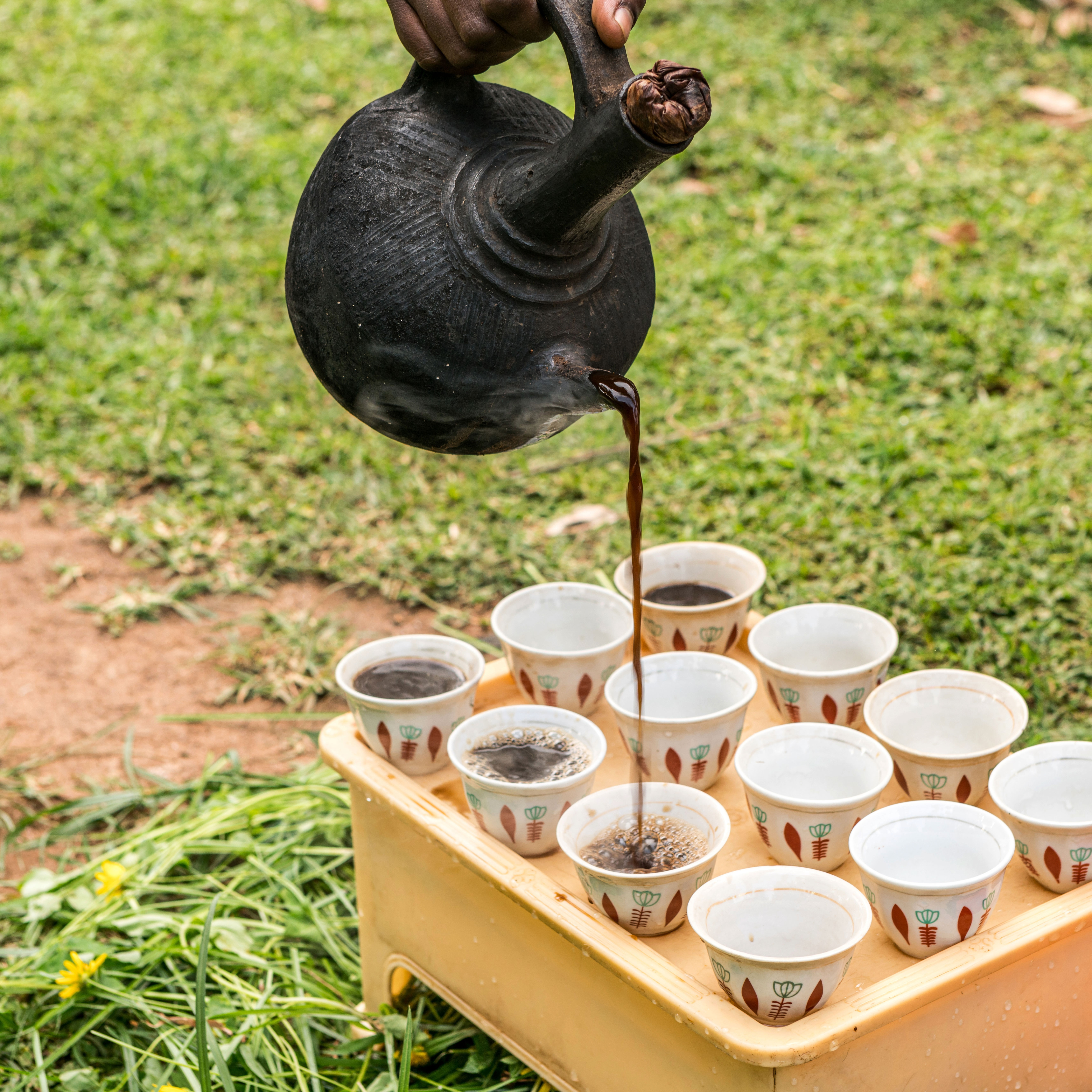
Making Coffee in Your Jebena
1. Decide how to secure your jebena for sitting on your stovetop
Your jebena may have a rounded bottom, which can be challenging to place on a heating source. In Ethiopia, jebenas are nestled directly into red-hot coals, making it easy to stabilize them. If you have a gas stovetop, the jebena may sit securely in the metal grating. For an electric or glass stovetop, you may want to find a metal ring – such as is used to stabilize a round-bottomed wok – to nestle your jebena in. Whatever your stovetop, before using your jebena, it’s very important that you make sure to investigate safe solutions for your kind of burner.
2. Determine your jebena’s volume
Next up is measuring how much liquid your jebena holds. You can do this by adding measured water to fill the belly of the jebena. Once you know the amount of water it holds, you can calculate, based on your preference, how much ground coffee to add. Some coffee makers recommend 1/3 cup of coffee grounds per 1 cup of water.
3. Adding coffee grounds and water
Practices vary for adding grounds and water to the jebena. Some people add cold or room-temperature water to the jebena and then spoon in the desired amount of coffee grounds. Others put the coffee in first and follow it with hot or boiling water to shorten the brewing time.
4. Brewing your coffee
Now, you’re ready to brew your coffee. Again, methods vary, so you may want to browse the internet for additional articles and videos to determine which method suits you best. Here’s one way:
Place the jebena on your heat source and watch (and listen) carefully for when the contents bubble up into the opening. When this occurs, use a potholder to remove the jebena from the heat source. This is an important step to preventing the coffee from getting too hot. Slowly pour the coffee into a separate container and then back into the jebena. This serves to slightly cool the coffee before continuing brewing. Many Ethiopians repeat this boiling/cooling process two to three times while brewing.
When your coffee is ready, remove your jebena from the heat, setting it aside for 5–10 minutes to let the grounds settle at the bottom. Carefully pour the coffee into cups to minimize the grounds escaping.
Enjoy!
Do You Want To Change the World Through Your Coffee?
With every bag of Lost Tribes coffee, you reach out to bless someone living in a poverty-stricken Jewish community with humanitarian aid and the Gospel of Jesus, their Messiah.



